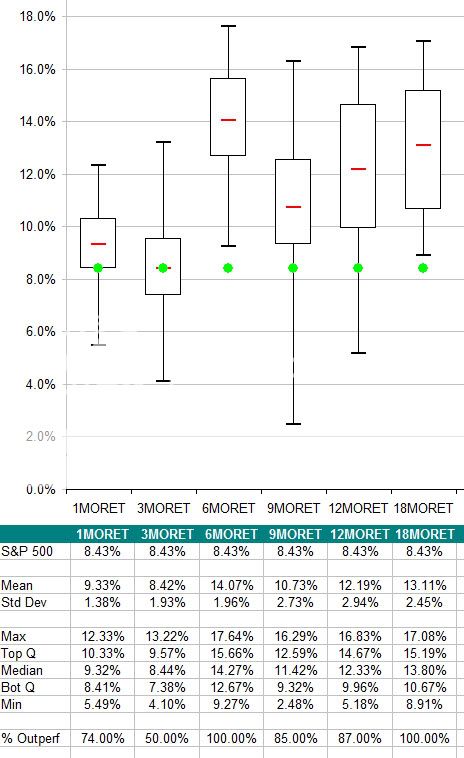I have been putting data together to update our white papers. It’s no secret that running a Global Tactical Asset Allocation (TAA) strategy was difficult last year. But when I looked at the data it was very clear that the problem wasn’t the strategies. The real problem was how the market behaved during 2011. It’s not you, it’s me. It’s not your trend following strategy, it’s what you’re trying to follow. The market was essentially a psycho, stage 5 clinger last year!
The data I will reference in this post is an extension of the data we published last year in two white papers. If you haven’t read them you can find them here. Our research process for this dataset takes a diverse universe of ETF’s and creates 100 different equity curves for a number of different momentum factors. The universe has a number of different asset classes represented including Equities (Domestic & Foreign), Bonds, Commodities, Currencies, and Real Estate. The results provide a good idea about how a momentum-based, global TAA strategy would have performed. By creating 100 different equity curves we are taking luck out of the equation and showing a realistic range of outcomes from buying high relative strength securities out of our universe.
Most of the momentum factors we follow underperformed last year. The factors we are showing refer to the lookback period to do our rankings. The 1MORET factor (1-month return) means we used 1 month of data to calculate our momentum ranks (all securities are held until they fall out of the top of the ranks, which might be as short as one week or as long as a couple of years). The 12MORET factor uses the prior 12 months of price data to rank the securities. The 3-month factor actually performed the best in 2011, but only 40 out of the 100 trials outperformed the S&P 500, so you needed some luck to outperform. The 6-month factor was the next best, but only 1 trial outperformed so you needed to be really lucky. All the other trials were very poor. There was so much short-term volatility back and forth last year that the very short 1-month formulation period was deadly. It paid not to be too quick on the trigger last year!
(Click To Enlarge)
But looking at 2011 in aggregate doesn’t
really tell the whole story. The beginning of the year was good for
these strategies. That person you were dating held it together pretty
well for the first couple of dates! Through the end of April, most
of the strategies were outperforming the S&P 500 on average. The
6-month factor was doing great as all 100 trials were outperforming.
Ironically, the factor doing the worst was the 3-month factor.
(Click To Enlarge)
The problems for trend following strategies
began in May. There were a series of sharp trend reversals in a number
of different assets: Bonds, Stocks, Precious Metals, Currencies (Yen
& Swiss Franc). No matter what factor you were using from May to
the end of the year it was difficult. It was tough to get traction
anywhere. The only factor that did even so-so was the 3-month factor,
and that was the worst factor through April. That’s just one of many
examples of how crazy the 2011 market was!
(Click To Enlarge)
So where do we go from here? Well, the,
“It’s not you, it’s me…” line always leads to a breakup. That’s
probably not a bad idea when dealing with something that doesn’t change.
Does that psycho, stage 5 clinger ever get any better? Nope. It only
gets worse.
But markets change, and TAA based on
momentum is very adaptive. We will not be in a choppy, range bound
environment forever. Trends will emerge. (If they don’t, it will be the
first time in history.)
Investors were euphoric about
momentum-based TAA strategies in the first part of the year. Looking at
the data you can see why – they were working exceptionally well. After
the last few months, people are certainly not as excited. In reality,
now is the time to be really excited about relative strength strategies,
not back in April. Now is the time you want to be adding money.




No comments:
Post a Comment